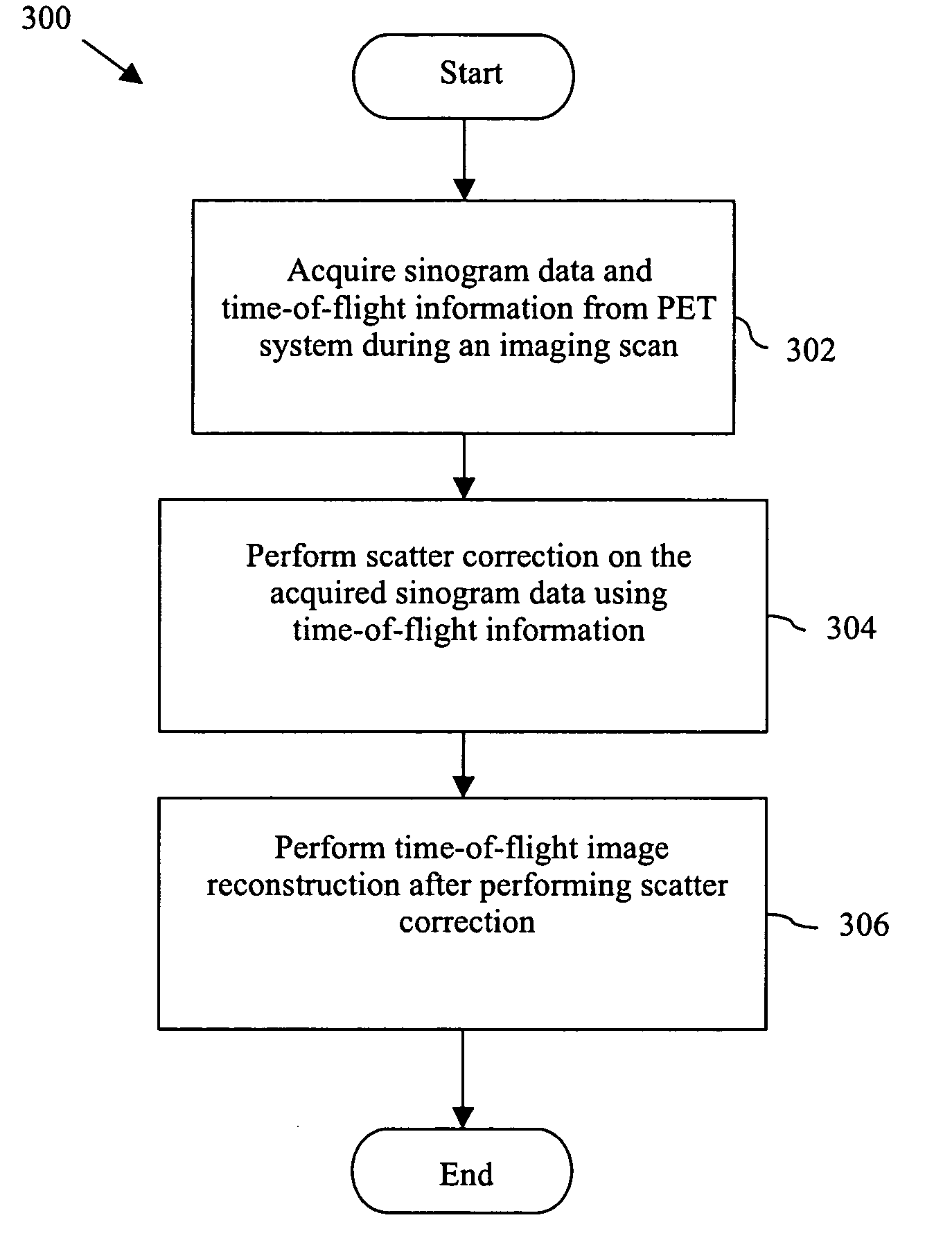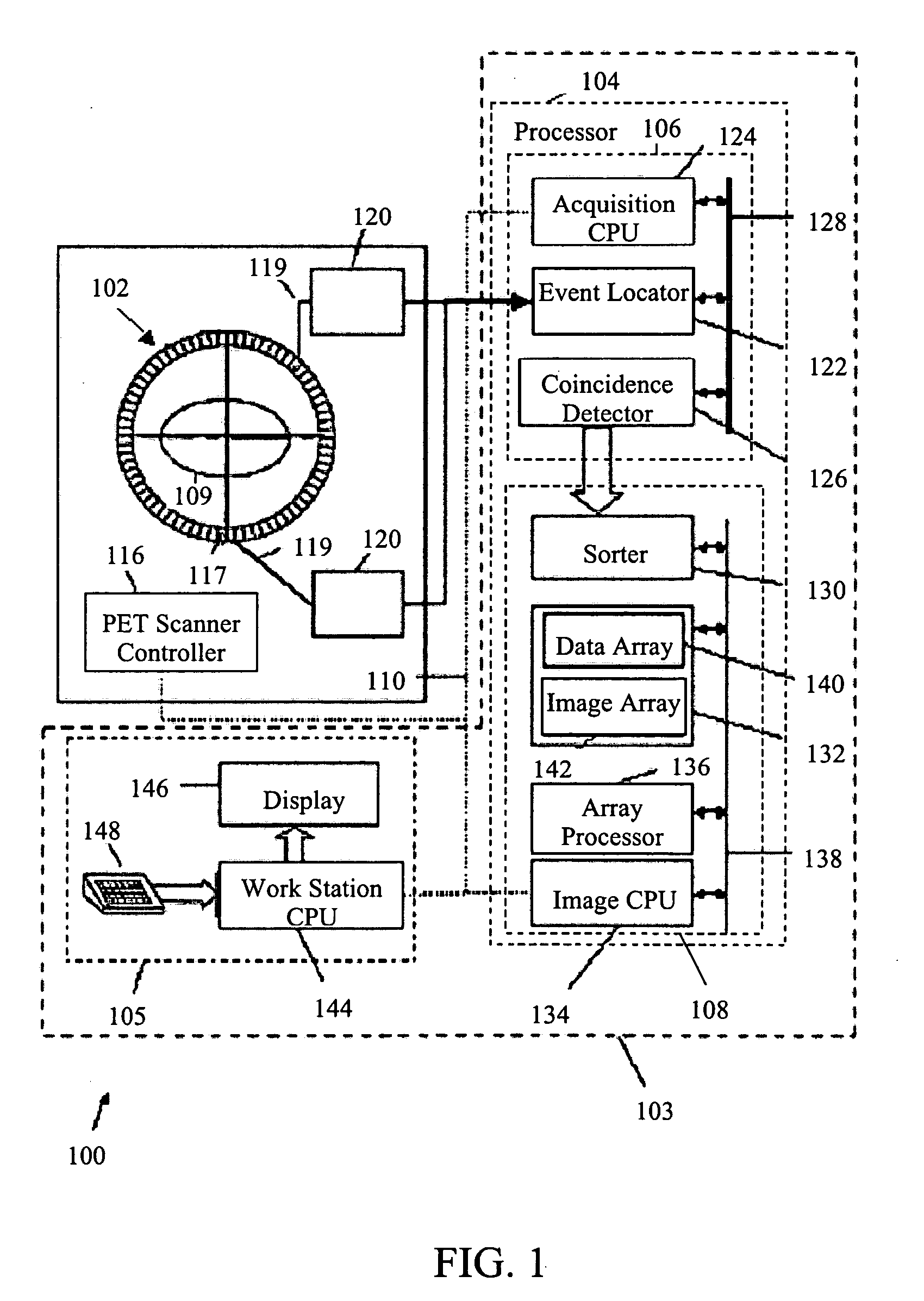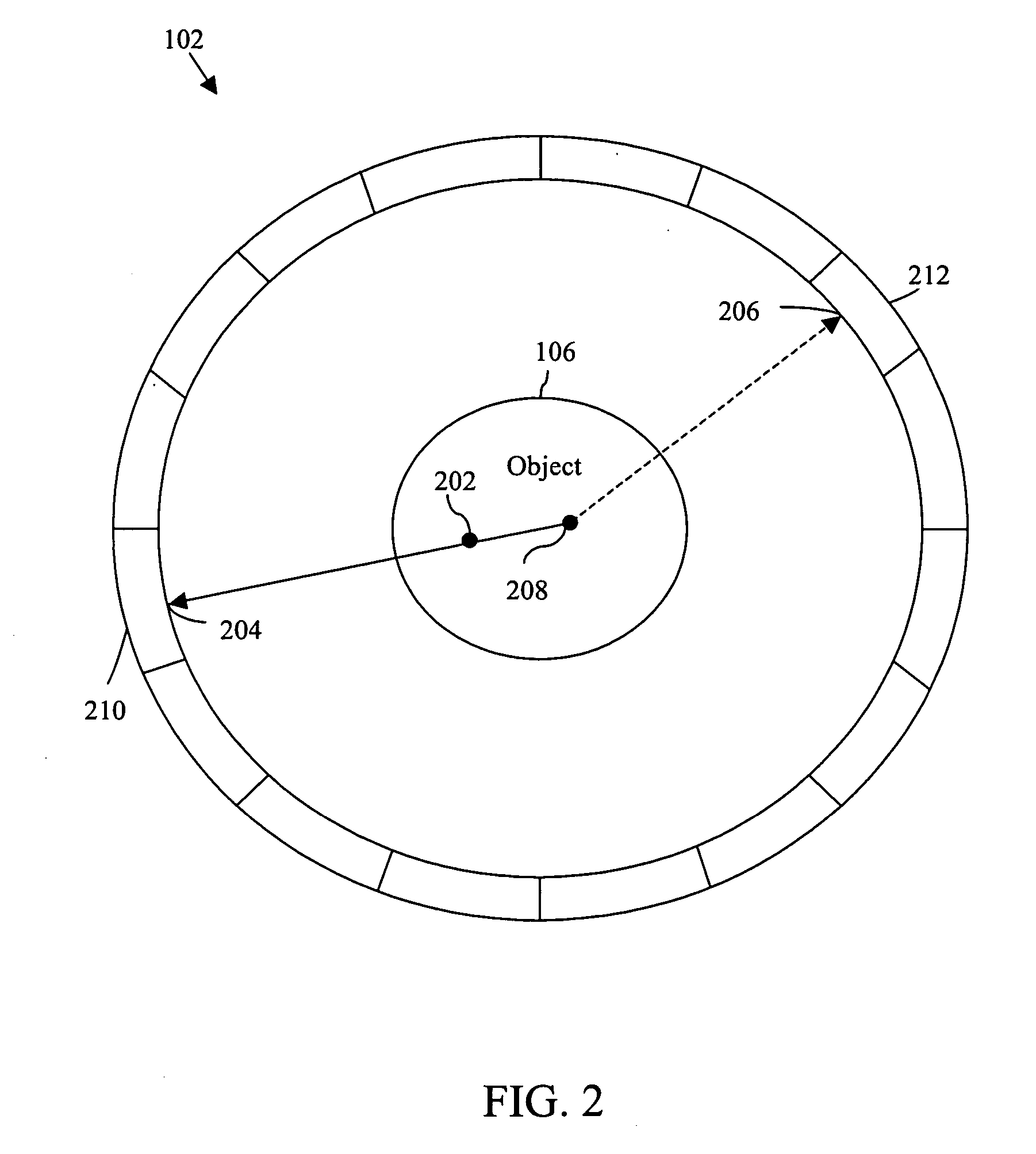Method and system for scattered coincidence estimation in a time-of-flight positron emission tomography system
a positron emission tomography and scatter correction technology, applied in the field of positron emission tomography (pet) systems, can solve the problems of less than acceptable image resolution, inaccurate image of annihilation distribution,
- Summary
- Abstract
- Description
- Claims
- Application Information
AI Technical Summary
Problems solved by technology
Method used
Image
Examples
Embodiment Construction
[0015] Various embodiments of the invention generally provide a method and a system for controlling a positron emission tomography (PET) system.
[0016]FIG. 1 is a block diagram of an exemplary embodiment of a PET system 100 in which various embodiments of the invention may be implemented. PET system 100 includes a plurality of detector ring assemblies. One such detector ring assembly, detector ring assembly 102, is illustrated in FIG. 1. PET system 100 further includes a controller 103 to control normalization and image reconstruction processes. Controller 103 includes a processor 104 and an operator workstation 105. Processor 104 includes a data acquisition processor 106 and an image reconstruction processor 108, which are interconnected via a communication link 110. PET system 100 acquires scan data and transmits the data to data acquisition processor 106. The scanning operation is controlled from operator workstation 105. The data acquired by data acquisition processor 106 is rec...
PUM
 Login to View More
Login to View More Abstract
Description
Claims
Application Information
 Login to View More
Login to View More - R&D
- Intellectual Property
- Life Sciences
- Materials
- Tech Scout
- Unparalleled Data Quality
- Higher Quality Content
- 60% Fewer Hallucinations
Browse by: Latest US Patents, China's latest patents, Technical Efficacy Thesaurus, Application Domain, Technology Topic, Popular Technical Reports.
© 2025 PatSnap. All rights reserved.Legal|Privacy policy|Modern Slavery Act Transparency Statement|Sitemap|About US| Contact US: help@patsnap.com



